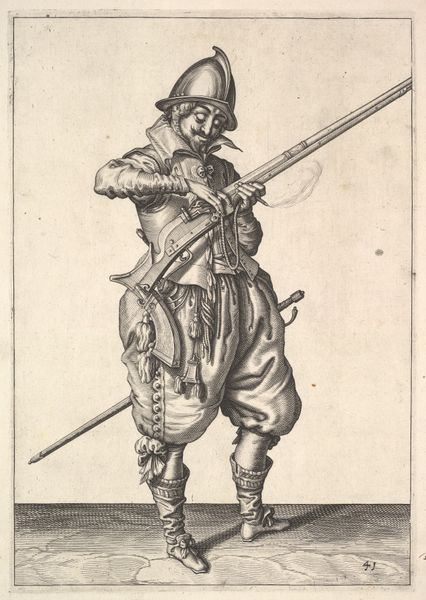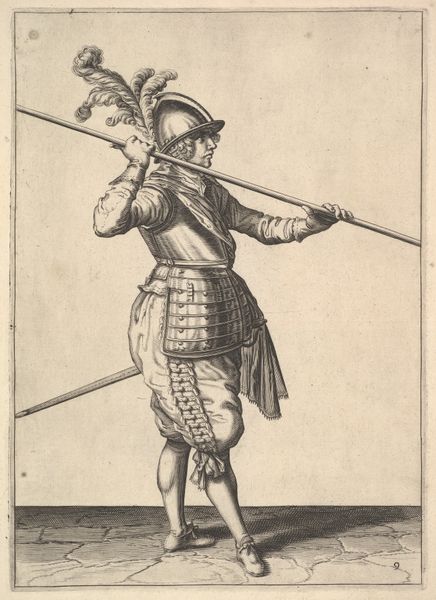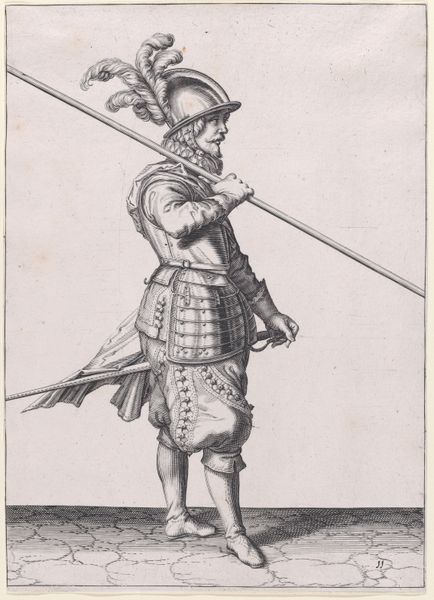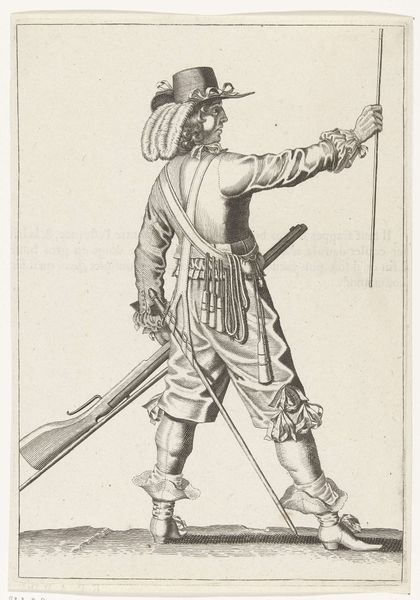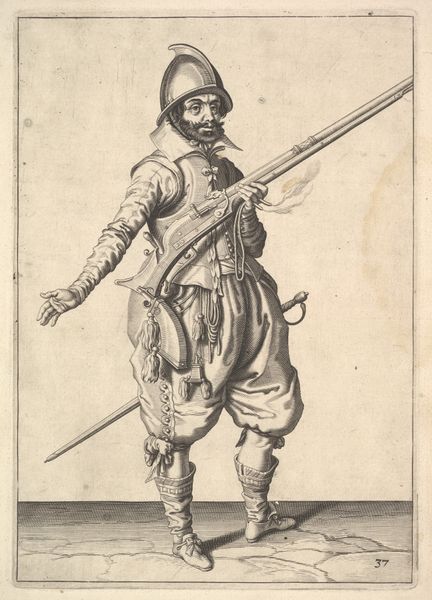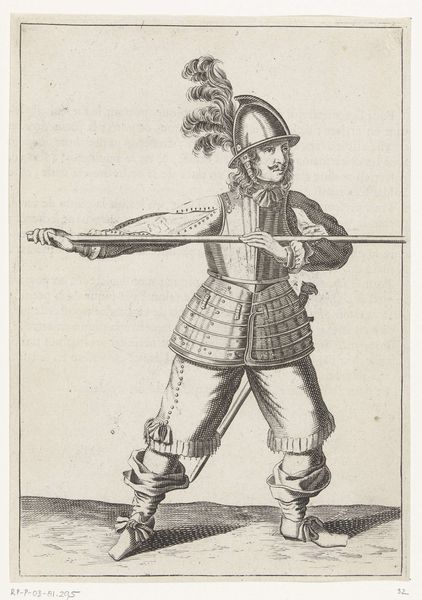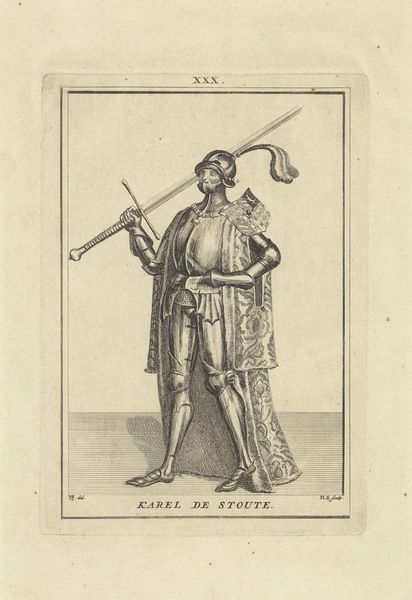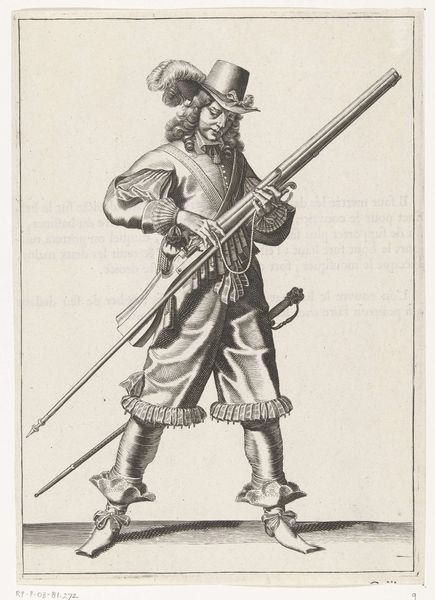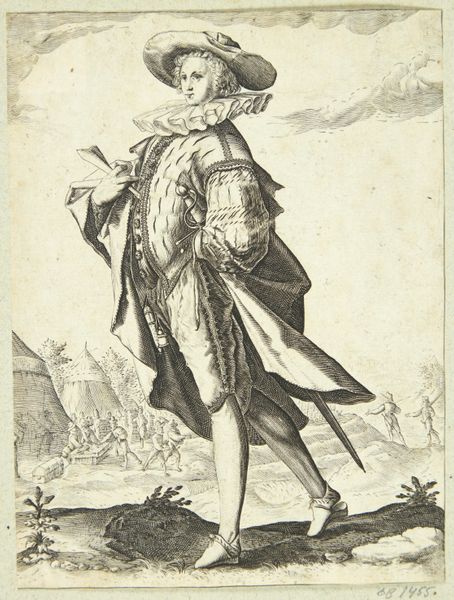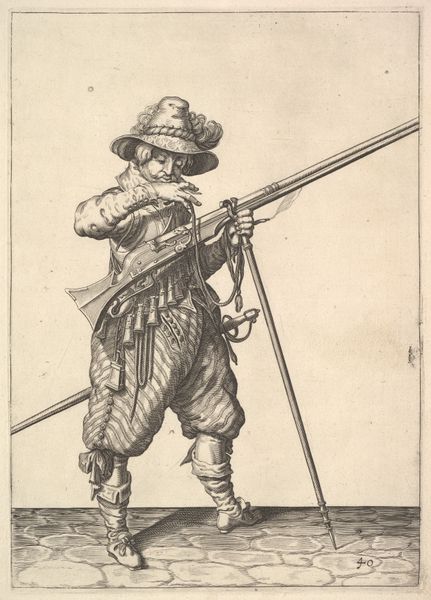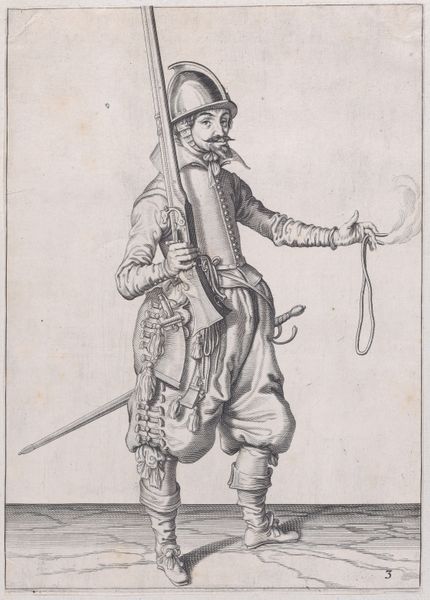
A soldier sliding his right hand along the training-pike, from the Lansquenets series, plate 22, in Wapenhandelinghe van Roers Musquetten Ende Spiessen (The Exercise of Arms) 1575 - 1629
0:00
0:00
drawing, print
#
drawing
#
imaginative character sketch
#
light pencil work
#
weapon
# print
#
pencil sketch
#
sketch book
#
personal sketchbook
#
idea generation sketch
#
soldier
#
pen-ink sketch
#
sketchbook drawing
#
storyboard and sketchbook work
#
sketchbook art
Dimensions: plate: 10 7/16 x 7 5/8 in. (26.5 x 19.3 cm) sheet: 13 7/8 x 10 5/8 in. (35.2 x 27 cm)
Copyright: Public Domain
Curator: Looking at this figure, I’m struck by the precarious balance he strikes, poised, almost melancholic, with that hefty pike. Editor: Indeed. Here we have "A soldier sliding his right hand along the training-pike," plate 22 from Jacques de Gheyn II’s series, Wapenhandelinghe van Roers Musquetten Ende Spiessen, or “The Exercise of Arms,” made between 1575 and 1629. It is a print now residing at the Metropolitan Museum of Art. Curator: Training for war looked ever so theatrical. His gaze directed downward, he seems almost weary already, which contrasts interestingly with all that armour, as though it were a costume. Do you sense that too? Editor: It's interesting you pick up on that, as his demeanor raises pertinent questions regarding military power. Wapenhandelinghe was influential in its time; manuals like these, demonstrating weaponry, not only equipped soldiers but bolstered the public image of a disciplined military body. This was vital to nation-building in the early modern era. Curator: It makes one wonder who this representation was actually for. Was it designed to fill eager young minds with dreams of glory or perhaps serve as more of a calculated and carefully choreographed routine for the ruling classes? Editor: Consider also the printing press itself. It’s the industrial revolution of its day. This is mass media, designed to project military authority throughout society and across territories. This print is a tool, beyond being a sketch or a picture. Curator: The stiffness in his posture compared to the loose and delicate way in which he appears to be holding the weapon makes me think that perhaps De Gheyn had hoped we might see through that armour and glimpse the vulnerability and burden of such martial display. Editor: Perhaps the picture embodies some sense of the cost of that military culture. As we stand here contemplating this single soldier, we are drawn to appreciate its implications, both personal and political. Curator: That really hits home as this work is really a reminder that behind any nation's perceived strength lies individuals doing real actions within societal structures. Editor: Precisely. It provides valuable insights into the complex connections among artistic representation, the formation of collective memory, and socio-political identity.
Comments
No comments
Be the first to comment and join the conversation on the ultimate creative platform.
